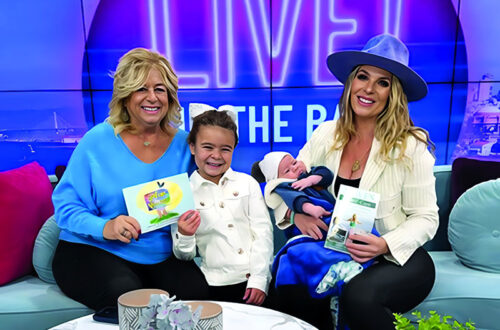
Implementing Routines Improves Family Harmony
Imagine your children leaving for school in the morning and getting ready for bed at night without needless hassles. Imagine your children showing you what they need to do each day and taking the steps involved without the need for constant reminders. The good news is that when adults and children work cooperatively together to establish and implement routines, they experience a greater sense of harmony and ease.
Having routines provides many benefits:
• improves children’s sense of connection, security/safety, and trust
• eases transitions
• develops time management skills
• fosters teamwork and a sense of community
• builds capability, responsibility, and creativity
• encourages goal setting/achievement
• creates more harmony and ease
Routines vary as children develop:
Infants and toddlers: In the beginning, parents create the routines. Infants relax into the rhythm that parents establish, and they learn to expect what will happen to them which creates a sense of security and calm. Routines also create opportunities for infants and toddlers to be more mentally engaged and participatory in the process.
Here’s an example of a morning routine:
• greetings/hugs/kisses
• diaper change
• getting dressed
• feeding/breakfast
• play time.
Preschool and early elementary school: As children develop they can become more involved in helping to create the routines. When children have a role in establishing the routine they feel a sense of ownership and empowerment. One idea is to create routine charts together and post them in a visible place. When children get off track, you can kindly ask them,
“What comes next on the routine chart?” This question can free parents from constantly having to remind/nag their children to do what needs to be done. Remember, though, that routine charts are different from sticker/reward charts. Sticker/reward charts are created to reward or punish children for their actions and behavior while routine charts are created to help guide their actions and behavior.
Here’s an example of a bedtime routine:
• put on pajamas
• brush teeth
• read books in bed
• hugs and kisses before lights out
A couple of ways to create routine charts are taking photos of children doing things that need to be done (e.g., feeding the fish, brushing teeth, etc.) or inviting them to draw a picture of those things. There are other ideas and examples online of routine charts and how to create them. Have fun and get creative!
Tweens and teens: As children transition into adolescence, their need for individuation coupled with their desire for greater autonomy will help them to develop their own routines.
Adults can ask helpful questions when things get challenging. Those questions might include “What’s your idea about getting your homework done tonight?” or “Do you have any ideas on how to make your mornings less stressful and rushed?” Adults can be kind AND firm at the same time and avoid the mistake of lecturing their children and/or doing things for them. If asking questions isn’t enough, you can try saying things like “I notice you haven’t set the table yet, would you please do that now?” “Let’s follow the agreement we made.” “It’s time to…”
Other examples of routines:
After school/homework routine:
• eat a healthy snack and do some physical activity (playing at a park, biking home from school, sports, etc.) enjoy free choice time (socializing with friends, doing activities, spending time alone, etc.)
• start working on homework at an already agreed-upon time
• have dinner together as a family.
Household chore routine: Make a list of all the daily/weekly chores that need to be done. Each family member can choose a task from the list and decide when that task needs to be done. Work together to create a sense of team effort, and find ways to make it more enjoyable and fun (playing music or turning tasks into games/contests).
Going deeper:
It’s important to resist the temptation to reward children for following routines or to punish children for not following them. Children benefit from learning the intrinsic value of simply doing what needs to be done.
Rewards and punishments diminish intrinsic value because they shift the focus from the satisfaction of contribution to the fear of not pleasing others.
The ultimate goal of routines is for children to develop the life skills they need to enjoy a sense of connection, capability, and accomplishment.
Tips for success with routines:
1. Take a leadership role by promoting and modeling routines.
2. Be consistent (there’s lots of repetition involved), follow through, and remain patient. Children of all ages need time to adapt to new routines and often test limits in various ways throughout the process. Holding your boundaries in a kind and firm way ultimately helps children learn to value and enjoy the role they play in making positive contributions.
3. Plan routines in advance and invite input and ideas from children.
4. Reflect together on how routines are working (or not working) for everyone, make changes as needed, and celebrate any/all success. That conversation could be part of a family meeting.
5. Remain flexible when appropriate/necessary. Sticking to a routine isn’t possible or practical in every situation.
7. Remain encouraging in spite of resistance. Remember the long-term goal(s) of teaching/modeling routines. When children exhibit an unexpected (out of the ordinary) resistance to a routine, attempt to dig deeper and figure out what may underlie their behavior (all behavior is communication, and it is up to us to discover the beliefs behind the behavior).
Resources: Positive Discipline A-Z, Nelsen, Lott, Glenn. Adapted by Colleen Murphy, Sarah Nofi, and Steven Weiss.
Visit: Positive Discipline Community Resources at www.pdcrsantacruz.org for more information, classes and tip sheets.






